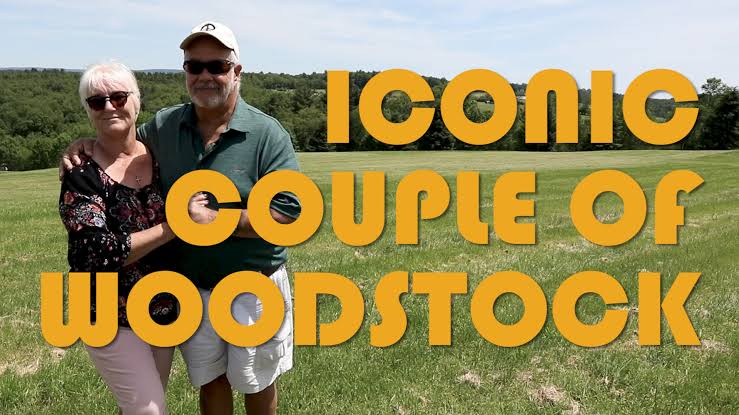The Woodstock Music and Art Fair, held in August 1969, not only defined an era but also immortalized several iconic moments in the annals of music history. Among these is the album cover of the original Woodstock soundtrack, which captured an intimate moment between a young couple wrapped in a blanket amidst the aftermath of the festival. This image has since become a symbol of peace, love, and music. The couple in the photograph are Nick and Bobbi Ercoline.
Early Hours of a New Era
As the dawn of August 18, 1969, broke over the horizon, the Woodstock festival was winding down. Many had already left, leaving behind a littered landscape of mud and memories. Amidst this, photographer Burk Uzzle captured the young couple, embodying the enduring spirit of the festival. Nick and Bobbi, then just 20 years old, stood huddled in a blanket against the chilly morning air, unknowingly about to become part of rock ‘n’ roll lore.
An Emblem of Peace and Love
The photograph was a spontaneous moment. Nick and Bobbi were not posing but were simply trying to stay warm and soak in the final moments of what was a life-changing experience. The image, with its backdrop of a crowd scattered across the field, perfectly encapsulated the essence of Woodstock—peace, love, and a sense of communal experience. It highlighted how music could bring together people from all walks of life, creating a temporary but transformative escape from the tumultuous social climate of the 1960s.
For Nick and Bobbi, the photo remained just a fond memory of their youth until it appeared on the Woodstock album cover and began to gain fame. The couple, who married in 1971, were surprised and humbled by the attention it brought. They continued to live a relatively quiet life, raising a family and staying active in their community. Despite their iconic status, they always emphasized that their experience was not unique but shared by many who attended the festival.
Legacy and Reflection
Over the decades, Nick and Bobbi Ercoline have become regulars at Woodstock anniversary events, where they share their stories and reflect on the cultural impact of the festival. Their image continues to inspire new generations who resonate with the ideals of Woodstock. It remains a testament to the power of music and the enduring appeal of a message of peace.
Today, the photograph of Nick and Bobbi at Woodstock is more than just a reminder of a music festival; it is a symbol of youthful hope and idealism. It reminds us of a time when thousands gathered in harmony, and music was a unifying force amidst chaos. As we look back, it serves not only as a nostalgic echo of the past but also as a beacon for future generations to carry forward the legacy of peace, love, and understanding.
Continuing Influence and Cultural Resonance
As we delve deeper into the story of Nick and Bobbi Ercoline, it becomes evident that their iconic image does more than merely capture a moment; it continues to influence and resonate within our culture today. The photograph has appeared in countless publications, documentaries, and galleries, serving as a focal point for discussions about the 1960s counterculture movement.
Symbolism in Modern Times
The visual of Nick and Bobbi wrapped in a blanket, looking out over a sea of people, transcends its time and speaks to current and future generations about unity and collective experience. In an era marked by significant social and political division, the image is often referenced as a reminder of the power of peaceful assembly and the transformative potential of communal experiences. The ideals of Woodstock, as epitomized by their photograph, continue to inspire movements for social justice and environmental causes, echoing the festival’s ethos of harmony with nature and one another.
Educational Impact
Furthermore, the photograph and the story of Nick and Bobbi are used in educational settings to teach about the power of music, culture, and social change. Schools and universities utilize their story to illustrate the historical context of the 1960s, exploring the broader social, political, and economic currents that shaped the festival and its legacy. This approach helps students understand the complexities of history and the ways in which cultural moments are interwoven with larger societal movements.
Media and Commercial Use
While Nick and Bobbi’s image symbolizes altruistic values, it also plays a role in media and commerce. It has been used in advertising campaigns, merchandise, and by music festivals seeking to capture the ‘spirit’ of Woodstock. This commercial use raises questions about the balance between maintaining the purity of the festival’s ideals and leveraging its cultural capital. The Ercolines themselves have navigated their unexpected fame with grace, focusing on the positive impacts of their image’s widespread recognition.
Personal Reflections and Public Engagements
In interviews, Nick and Bobbi often reflect on the surreal nature of their fame. They discuss their participation in public engagements and their interactions with fans who view them as embodiments of a pivotal moment in history. Through these engagements, they have had the opportunity to promote the values of peace and environmental sustainability, remaining active in various charitable and ecological initiatives.
Conclusion
Decades later, the photograph of Nick and Bobbi at Woodstock remains a powerful emblem of a pivotal era in American history. As much as it represents the past, it also prompts ongoing dialogue aboutn our current societal values and our hopes for the future. It encourages us to reflect on how far we have come and how far we still need to go in achieving the harmony depicted in that serene August morning back in 1969. In this way, the legacy of the iconic couple from the Woodstock album cover continues to inspire and challenge us all.


